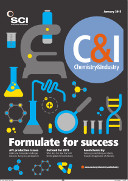During the course of evolution, the processes inside living organisms have remained surprisingly similar. One aspect shared by all organisms is that their genetic information is stored in the form of DNA. Humans share over 90% of their DNA with cats, and as much as half with fruit flies. Even the almost 20% of genes that humans have in common with plants offer new starting points for research projects.
Pharma and crop science major Bayer’s new nematicide Velum/Verango, launched in 2014, was the result of just such a project, arising from research into the respiratory chain that produces energy in the mitochondria of living cells. Different active ingredients with the same mechanism of action are now being pursued as potential worm treatments for livestock and pets, while inhibition of the mitochondrial energy supply could also provide a route to cancer therapies, Bayer researchers have demonstrated.
Other recently launched pharma products include the anticoagulant Xarelto, which could prevent up to an estimated two out of every three strokes, says Bayer chairman Marijn Dekkers; along with age-related macular degeneration therapy Eylea, which uses an oil-based formulation to overcome the problem of injection and also the need for an acidic solution for topical application; cancer drugs Stivarga and Xofigo; and a treatment for certain lung diseases, Adempas. These five products are estimated to have an annual peak sales potential of at least €7.5bn.
Bayer’s pharma pipeline currently contains 57 projects, of which 20 are in Phase 1 clinical testing, 19 in Phase 2 and 18 in Phase 3. ‘All these active ingredient candidates have one thing in common: they are developed from new molecules with a specific active profile,’ says Dekkers.
In September 2014, ODM-201, an androgen receptor modulator in tablet form developed through an agreement with Finnish pharma company, Orion, entered a Phase 3 study in men with high-risk prostate cancer, but no detectable metastases. Good progress is also claimed with the development of products containing recombinant factor VIII (rFVIII) for haemophilia. For these products, investments of over €500m are planned in expanded production capacities at German sites in Wuppertal and Leverkusen.
Acquiring the Consumer Care business of Merck & Co in the US and Dihon Pharmaceuticals in China has lifted Bayer into second place in the over-the-counter (OTC) drugs sector, Dekkers says, behind the recently formed Novartis/ GSK venture, and overtaking John & Johnson. The aim over the next two years is to launch innovative products, expand business in growth markets and exploit potential synergies arising from acquisitions. In 2010, Bayer achieved a turnover of €3.4bn in this segment; however, 2014 revenue exceeds €5.5bn.
In the pharmaceuticals segment, Bayer has completed 25 Phase 3 clinical studies since 2010, while CropScience introduced 30 new active ingredients to the market between 2000 and 2013. In 2013, Bayer applied for 500 patents in the life sciences.
In CropScience, Dekkers claims Bayer is number two in crop protection, both chemical and biological, and seventh in seeds and traits, which it plans to expand further. ‘Like pharmaceutical business, new products are also very important,’ says Dekkers, adding that the r&d pipeline for Crop Protection and Seeds & Traits should produce an estimated annual peak sales potential of at least €4bn from products introduced to the market between 2011 and 2016. New products include the fungicide Luna for treating various fruit and vegetable fungi, such as powdery mildew and storage rot; and Adengo, an herbicide for corn that controls numerous grasses and weeds.
A significant part of Bayer’s innovation activity is through external partnerships. ’In recent years, many innovative research projects began as partnerships with institutes, universities and start-up companies,’ says Kemal Malik, Bayer board member responsible for innovation. ‘It is no longer possible for a company to manage all areas of innovation itself. Strategic cooperation agreements and alliances therefore are an integral part of the innovation chain of all successful, research-based companies.’
In 2013, Healthcare had 644 cooperative projects, while in CropScience there were 221; currently there 850 partnerships. Two more were added in 2014 looking at ‘Big Data’ in the life sciences sector: a cooperation with the Broad Institute, a joint research facility of Harvard University and the Massachusetts Institute of Technology in Boston, US, aims to improve the lives of cancer patients by identifying three new investigational drugs during the five-year collaboration. Meanwhile, CropScience and Targenomix, a spin-off of the Max Planck Institute of Molecular Plant Physiology in Germany, aim to discover new concepts for controlling weeds and improving plant quality using systems biology to identify novel small molecules and trait technologies.
Bayer has also used so-called crowd-funding to support innovation, including Grants4Targets, Grants4Leads and Grants4Apps initiatives at Bayer HealthCare, and the CoLaborator concept in San Francisco, US, and Berlin, Germany.
‘Overall, we expect the R&D-to-sales ratio to increase in the coming years,’ says Dekkers. R&d in the life science businesses in 2014 amounts to €3.2bn; with HealthCare accounting for 70% and CropScience, 30%. When asked whether the recent spin-out of MaterialScience will make Bayer an attractive takeover target, Dekkers says that, as MaterialScience represents just 10% of Bayer’s total value, ‘you had better turn up with a big cheque‘.




